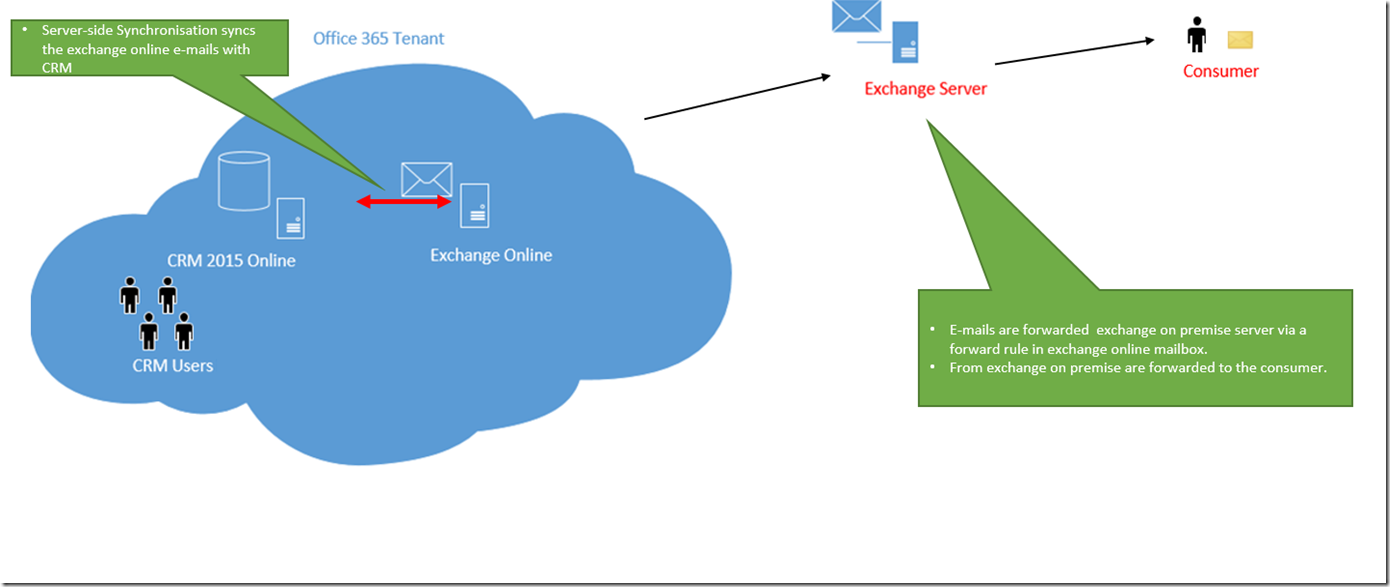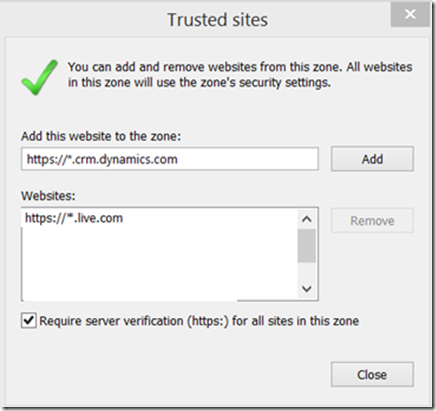In my last post I discussed the architecture for incoming mail support in CRM online via exchange on premise server.
Here is the link for it: https://dynamicsofdynamicscrm.wordpress.com/2015/06/26/architecture-for-adding-on-premise-exchange-server-to-crm-online-for-incoming-emails-server-side-sync/
In this post, I am basically going to concentrate to showcase the reverse architecture support.
In the above diagram clearly states that a forward rule is being setup from Exchange online to Exchange on premise via Exchange online admin centre.
As this is a relatively new area I am going to put a step by step of how the forward rule can be setup:
1. In the Exchange Admin Center, navigate to Recipients > Mailboxes.
2. In the list of user mailboxes, click or tap the mailbox that you want to configure mail forwarding for, and then click or tap Edit ![]() .
.
3. On the mailbox properties page, click Mailbox Features.
4. Under Mail Flow, select View details to view or change the setting for forwarding email messages.
5. On this page, you can set the maximum number of recipients that the user can send a message to. For on-premises Exchange organizations, the recipient limit is unlimited.
For Exchange Online organizations, the limit is 500 recipients.
6. Check the Enable forwarding check box, and then click or tap Browse.
7. On the Select Recipient page, select a user you want to forward all email to. Select the Deliver message to both forwarding address and mailbox check box if you want both the recipient and the forwarding email
address to get copies of the emails sent. Click or tap OK, and then click or tap Save.
8. What if you want to forward mail to an address outside your organization? Or forward mail to multiple recipients? You can do that, too- You need to create contacts with external address and that will be available on Step 2.
Note: You need Exchange online license like Exchange Plan 1, Exchange Plan 2 or collaborative E3 enterprise license for the mailbox user on office 365 to achieve this.
Also, TechNet links were used for step by step of exchange online navigation.
Hope it helps and Happy CRMing!



















